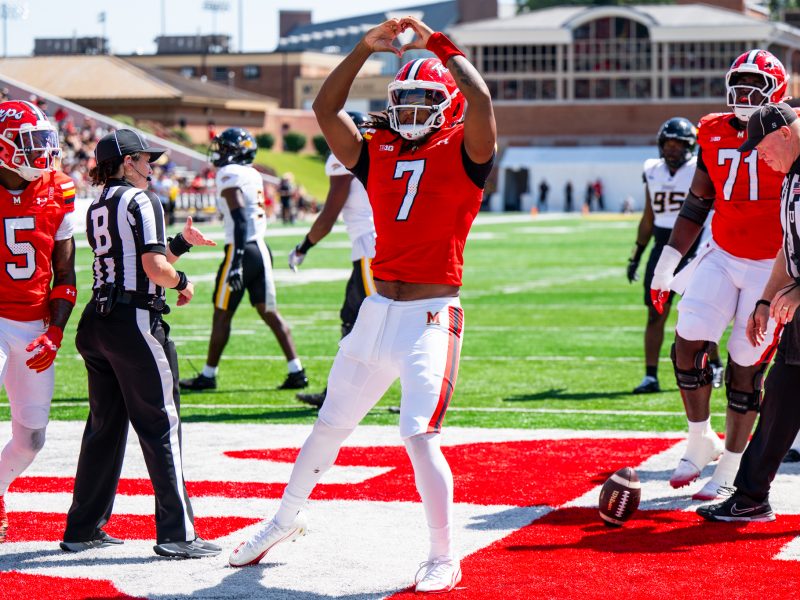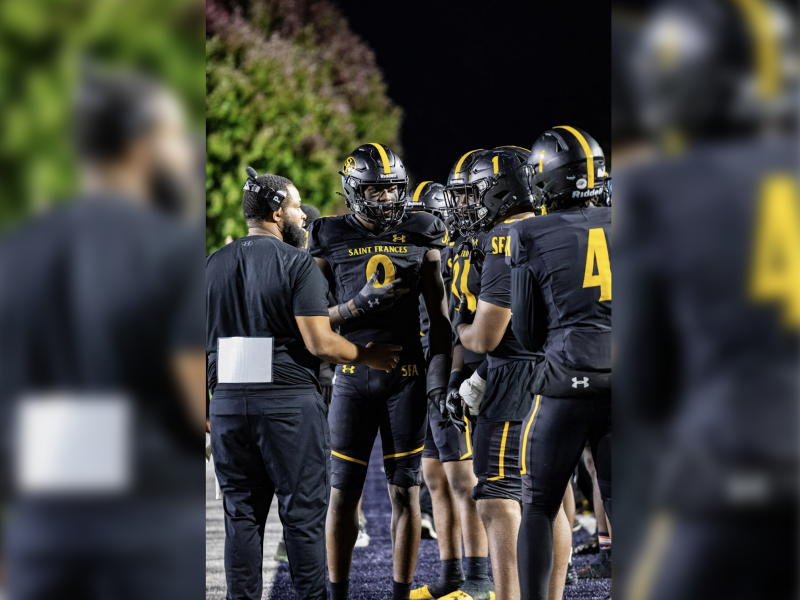Maryland football has suffered many disheartening losses under coach Michael Locksley. On Friday night, as 10.5 point favorites, the Terps added another.
Northwestern dominated Maryland 37-10 at SECU Stadium. The Terps’ three defeats have come against coaches with 31 games of experience at their respective schools. Meanwhile, Locksley has coached 68 games at Maryland.
Not many losses looked worse than the one to the Wildcats.
“Today, we took a step back,” Locksley said.
The Terps entered Friday with their worst start since Locksley’s second year as head coach. Maryland had an excellent chance for a bounce-back victory against Northwestern; it was off a bye week to correct mistakes and faced an opponent without a Big Ten win this season.
Locksley said on Tuesday that Maryland would respond after the week off. He wanted to remain positive despite the early season losses. He said his program needed to build championship habits.
The coach even took over play-calling duties from offensive coordinator Josh Gattis, hoping to generate an offensive spark.
[Maryland football hopes to quell post-bye week woes]
Instead, the Terps (3-3, 0-3 Big Ten) opened with their worst quarter of the season and remained sluggish throughout the night. They fell behind 14-0 in the first frame, a two-score deficit within the first 15 minutes for the first time this year.
“We weren’t far off having successful plays in that first half,” Billy Edwards Jr. said.
Northwestern (3-3, 1-2 Big Ten) quarterback Jack Lausch averaged 174 yards of passing per game entering the night. He nearly eclipsed that mark in the first half alone, racking up 132 yards. He entered Friday with the lowest completion percentage in the Big Ten. Maryland’s defense allowed a passer rating of 150.3.
Big plays fueled Lausch’s strong performance, a fatal flaw for the Terps’ defense this season. Wildcats receiver A.J. Henning caught a 40-yard pass without a Maryland defender near him on their second drive of the game. They added two more explosive passes on the next possession.
It’s the second time this season the Terps allowed a first-year starting quarterback to excel. Michigan State’s Aidan Chiles did the same. Defensive coordinator Brian Williams continued to call man-to-man coverage despite an inexperienced secondary, a unit with consistent struggles.
“We gave up a couple of big plays that shouldn’t have happened, plays we went over for two weeks in a row,” Ruben Hyppolite II said.
When Maryland’s defense strung together stops, its offense failed to respond. With a chance to trim the deficit to one-score entering halftime, the Terps didn’t score on either of their drives in the final two minutes of the first half.
[‘He’s real, you can just sense it’: The untold stories of Michael Locksley]
The poor performance wasn’t limited to those two units. The special teams also had issues. The Terps fumbled a kickoff return, missed a 54-yard field goal and allowed a punt to be downed at the one-yard line.
Maryland remained winless in Big Ten play, its worst conference start since 2015.
“It’s putting out the fires of a young team. One week it’s penalties… so we get that fixed,” Locksley said. “Now all of a sudden the turnovers show up, which we haven’t turned the ball over.”
The program has taken a step back this year. While Taulia Tagovailoa — the greatest statistical quarterback in program history — exited in the offseason, Edwards has been one of the better signal callers in the Big Ten.
Every other aspect has faltered. A “defensive led-team” has allowed the fifth-most points in the conference. The rushing attack with dynamic playmakers can’t consistently move the ball. And Maryland continues to be one of the most penalized teams in the conference.
Now, the Terps enter the hardest portion of their schedule. At just three wins, with a combined opposition winning percentage of .742 remaining, a bowl game appearance seems unlikely.



